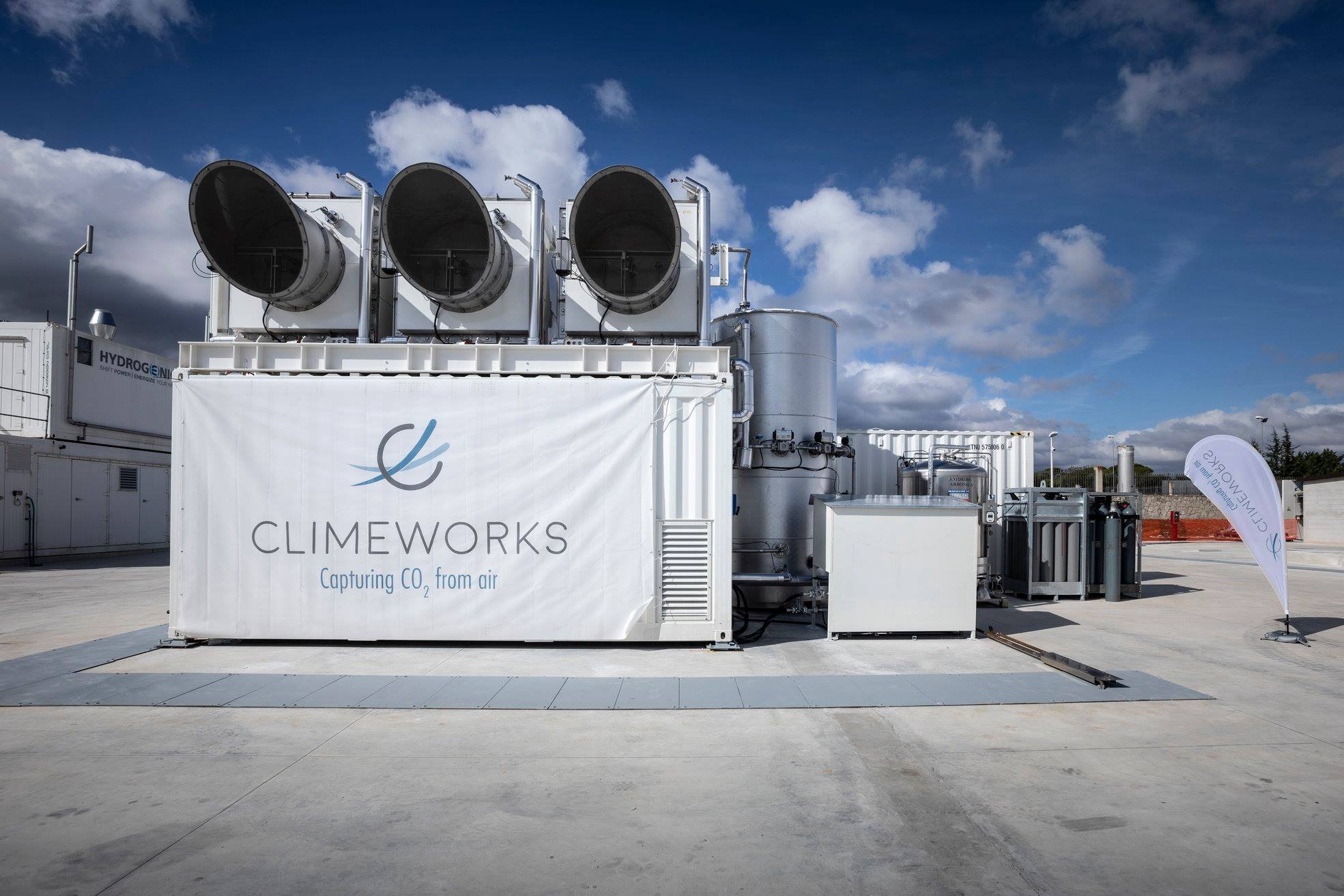The same carbon dioxide (CO2) that’s heating up the planet could soon be making your soda fizzy.
Climeworks, based in Switzerland, is one of several companies working to pull CO2 from the atmosphere as a way to fight climate change — and soft drinks happen to be one of many destinations for the retrieved element. The majority of the CO2 that Climeworks removes gets stowed deep underneath Iceland, in natural formations made of basalt.
In some ways, carbon removal is a last-resort concept fueled by an understanding that countries aren’t yet doing nearly enough to curb greenhouse gas emissions. Critics argue that these companies could distract from efforts to reduce emissions; provide companies with “greenwashing” opportunities; and have a negligible impact on the environment.
But most forecasts by climate scientists actually now insist that carbon removal must be a part of any climate solution to stay within the Paris climate agreement goal of keeping temperature increases at less than 1.5 degrees Celsius above pre-industrial levels.
“The world needs to do everything to reduce our emissions, with renewable energy at the top of the list,” Lia Flury, business development manager at Climeworks, told Global Citizen. “But on top of drastic emissions reduction we need to remove carbon dioxide directly from the air, because otherwise we will not reach the international climate targets.”
Carbon Offsets

If you eat meat and dairy products, drive a car, heat your home, use electricity, take a flight, buy new clothes, and do any number of other everyday things, then you have a traceable carbon footprint.
The average American, for example, emits 48 tons of CO2 annually — significantly more than the global average. If the entire global population emitted similar levels, then the world would blow past the goals set by the Paris climate agreement.
The best way to reduce your carbon footprint is to take steps to reduce your environmental impact. You can fly less, eat less meat, and take public transportation, for example.
But efforts to offset CO2 emissions are becoming increasingly popular in the corporate world and are often shorthand for “sustainability.” These words can often be found in corporate press releases, sustainability newsletters, and Instagram posts.
If a company or person expects to release a lot of greenhouse gas emissions, then they can offset them. Often, these efforts involve planting trees, improving soil, or investing in renewable energy — relatively low-lift methods that are undeniably good for the environment.
But most of these methods don’t immediately remove the CO2 that’s been added into the atmosphere. Instead, they promise that future emissions will be removed.
Only carbon removal technologies, also known as direct air capture and storage, can zero out emissions.
That is where Climeworks comes in.
The Science Behind Climeworks

Climeworks first formed about a decade ago and has spent the last several years improving its technology and working to cut costs. While its process is expensive, it's cheaper than studies had predicted. Even still, the average American would have to spend tens of thousands of dollars annually to erase their carbon footprint.
Like any emerging technology, Climeworks plans to significantly reduce costs over the next decade, making its method more feasible for companies and individuals alike.
The company’s method is straightforward.
CO2 collectors (that look a bit like boxy fans) are installed within a frame or individually near a source of energy — Climeworks only considers renewable energy providers so the process doesn’t contribute to global warming. As a fan pulls air through the collectors, CO2 molecules bind to a filter material inside the machines. When the filter is saturated, the collectors are heated to 100 degrees Celsius to distill the carbon into its purest form.
The resulting carbon is then sold to drink companies, greenhouses, and renewable fuel manufacturers. It can also be mixed with water and pumped underground into the basaltic rock formations, where it reacts with compounds to become solid carbonite.
A single collector can remove around 50 tons of CO2 annually — roughly the carbon footprint of a single American.
A growing number of companies, including Microsoft, are becoming customers of Climeworks as part of their pursuits of carbon neutrality. By 2025, Climeworks wants to capture around 1% of CO2 emissions, a goal that will require a significant expansion.
The company doesn’t want to be seen as a cure-all. It faces obvious limitations in terms of scale and cost, but it does see its value as one part of a broader solution to climate change.
“It’s not enough if there is only Climeworks in the world,” said Flury. “We also need forestation and other solutions.”